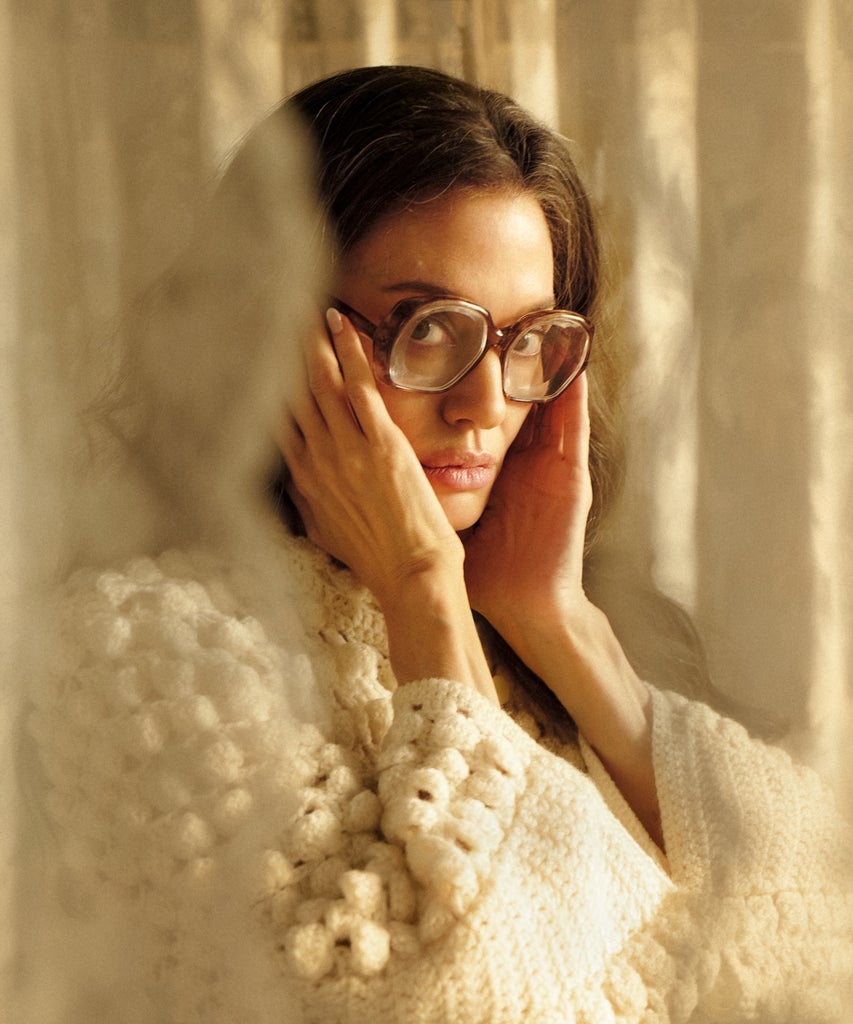
Angelina Jolie took seven months of voice lessons to portray Maria Callas in Pablo Larraín’s Maria. The titular opera soprano left an indelible legacy with her unparalleled voice — and with her elegantly bold style, which translated to the Oscar-winning actor wearing upwards of 50 exquisite custom-made gowns, recreated stage costumes, and chic late ‘70s ensembles to embody Callas authentically on screen.
Massimo Cantini Parrini, the film’s costume designer, worked very closely with Jolie, telling Refinery29 via a translator: “I brought suitcases and suitcases full of clothes and fabric samples, and we worked together over one full morning and an afternoon, so that I could understand exactly what it was that she needed to wear.”
Maria — the third film in Larraín’s trilogy on iconic women of the 20th century (Jackie Kennedy and Princess Diana were past subjects) — sees Callas at the height of her fame in the ‘50s and ‘60s, as well as in her final days in 1977 Paris. Cantini Parrini dove into extensive photo and video documentation of the singer, meticulously recreating glittering ensembles that marked milestones in her life, such as meeting the love of her life, shipping magnate Aristotle Onassis (Haluk Bilginer), at a 1957 gala in Venice. Reimagining the event, Jolie-as-Maria swans into the ballroom in an impeccable replica of Callas’ black and white, silk-satin gown with delicate, pearl-dotted waistline.
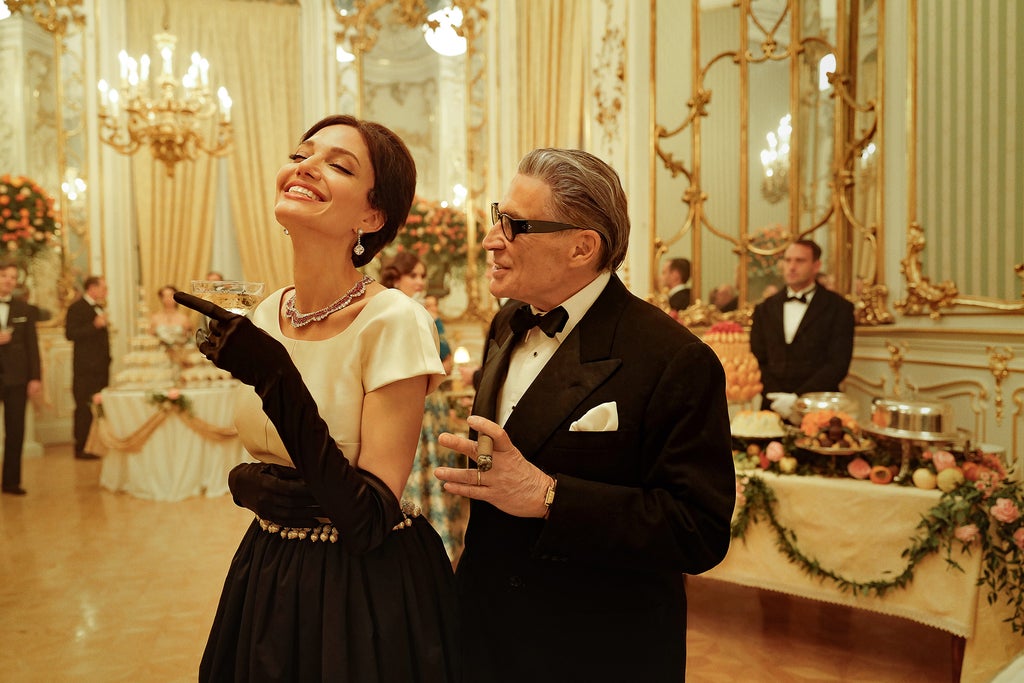
The exacting, two-time Oscar-nominated costume designer (for Cyrano and Pinocchio) also made replicas of pieces in Callas’ famed jewelry collection, including a sizable platinum, ruby and diamond collar (a gift from her first husband, industrialist Giovanni Battista Meneghini, which sold at Sotheby’s for $280,000 in 2004), and a gold necklace with “charms that she collected throughout her whole life and always kept with her.”
“I was maniacal about [recreating history],” he says.
Ahead, Cantini Parrini breaks down the key costumes Jolie wears in the film to personify the legendary opera star and fashion icon.
Funeral Black And Heirloom Accessories
After her final stage performance of Franco Zeffirelli’s Tosca at London’s Royal Opera House in 1965, Callas retreated from her much-photographed public life. Because she left scant documentation to reference for her final years, Cantini Parrini took creative license to custom-design the singer’s circa-1977 wardrobe in the film. Armed with ample inspiration from her mid-century signature style, he contemplated Callas’ frame of mind during that period and deduced how she’d express her emotions through dark and neutral, monochromatic ensembles.
“I talked about this with Angelina and Pablo,” says Cantini Parrini. “These tones of black remind us [that these days are] leading up to her funeral.”
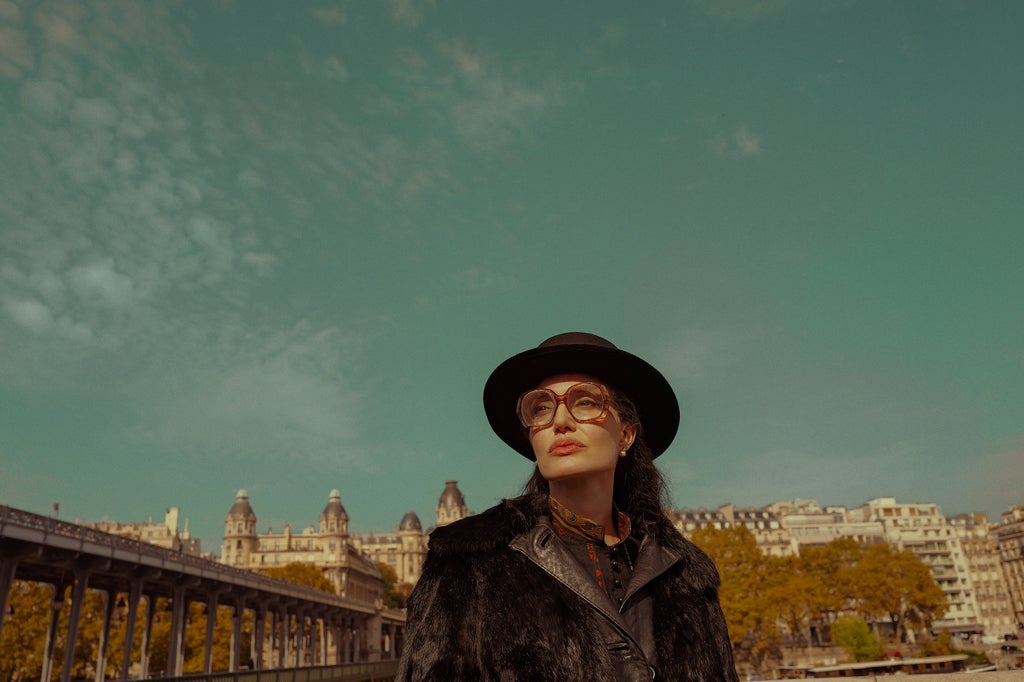
For her first interview and city stroll with documentarian Mandrax (Kodi Smit-McPhee), Maria wears sleek, polished and very guarded layers of black: a soft silk blouse, wide-leg trousers, a boater hat, gloves and a fur-paneled leather trench. “I was inspired by the last photo of Callas snapped in 1977. She’s furtively leaving her home because she didn’t like her picture taken,” says Cantini Parrini, who custom-made Jolie’s coat based on a vintage piece in his vast, designer-filled archive. (The production worked with PETA to source only vintage fur from the costume designer’s existing collections for Jolie’s costumes.)
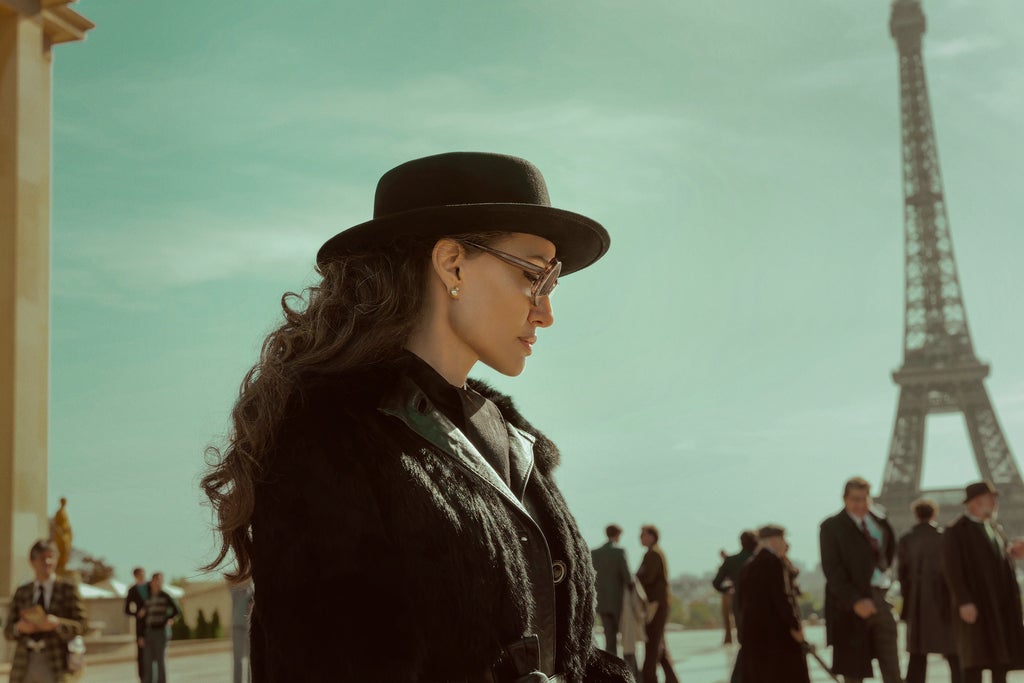
Cantini Parrini brightened Maria’s somber outfits with small bursts of color, such as a red and gold silk scarf worn around her hair or casually tied around a green Gucci bamboo-handle bag. These feel like mementos of her more vibrant past, the happier times on stage and with Onassis. “I didn’t want her to come across as a widow,” says Cantini Parrini.
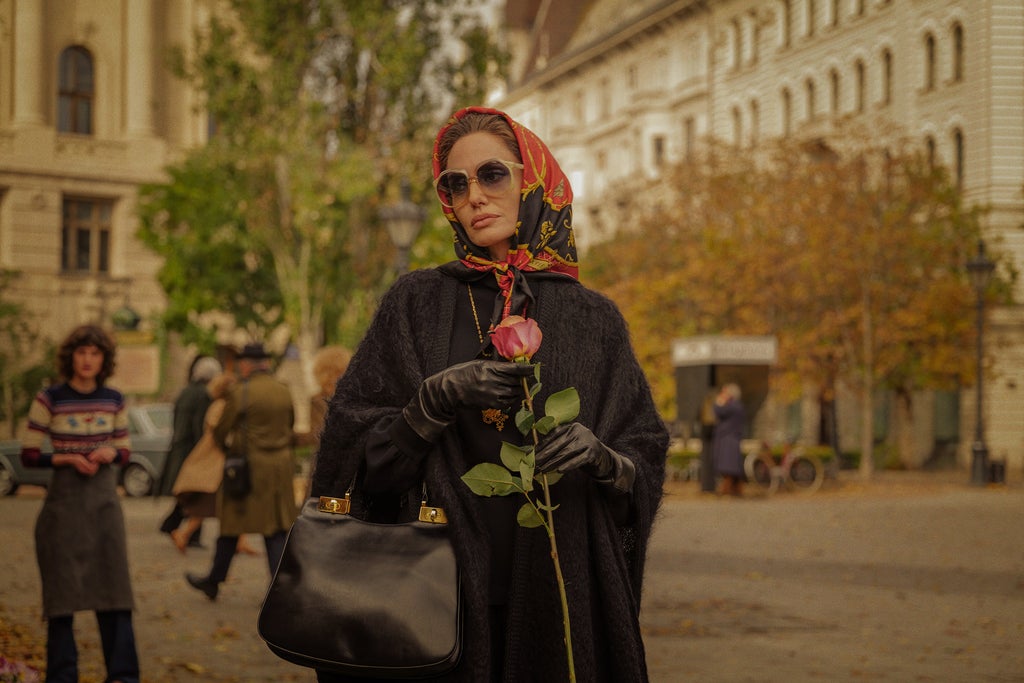
The silk scarves also have a sentimental meaning for the costume designer: “These were Hermès and Gucci scarves that actually belonged to my grandmother. I felt Maria would have worn these scarves because she used to wear these designers. I talked to Angelina about them — and there were very many scarves she could select from — but she chose to wear these.”
An Ode To Yves Saint Laurent
Maria, in failing health and emotional distress, visits the opera house in an attempt to recapture her now-faltering voice. Dressed in a crimson floral-print dress with a vest overlay and puff sleeves over black tailored pants, she mesmerizes the pianist and sound technician by belting out “Qui la voce sua soave” from her 1949 Venice performance as Elvira in Vincenzo Bellini’s I Puritani.
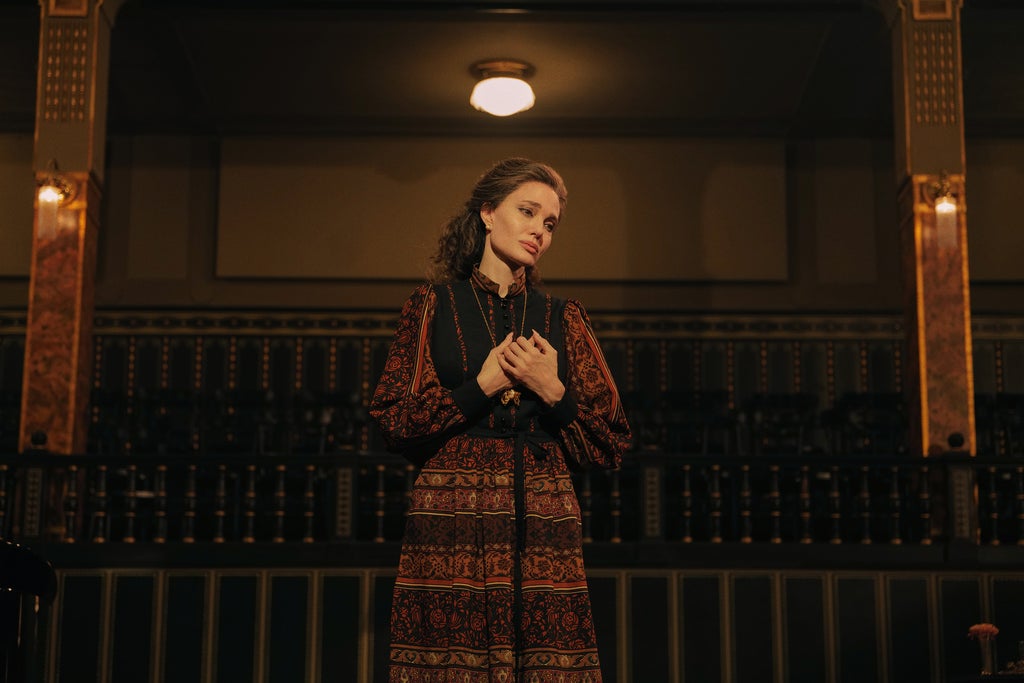
To create the more free-spirited but still controlled look, Cantini Parrini paid homage to the designs of Yves Saint Laurent, one of Callas’ favorite designers (and friends).
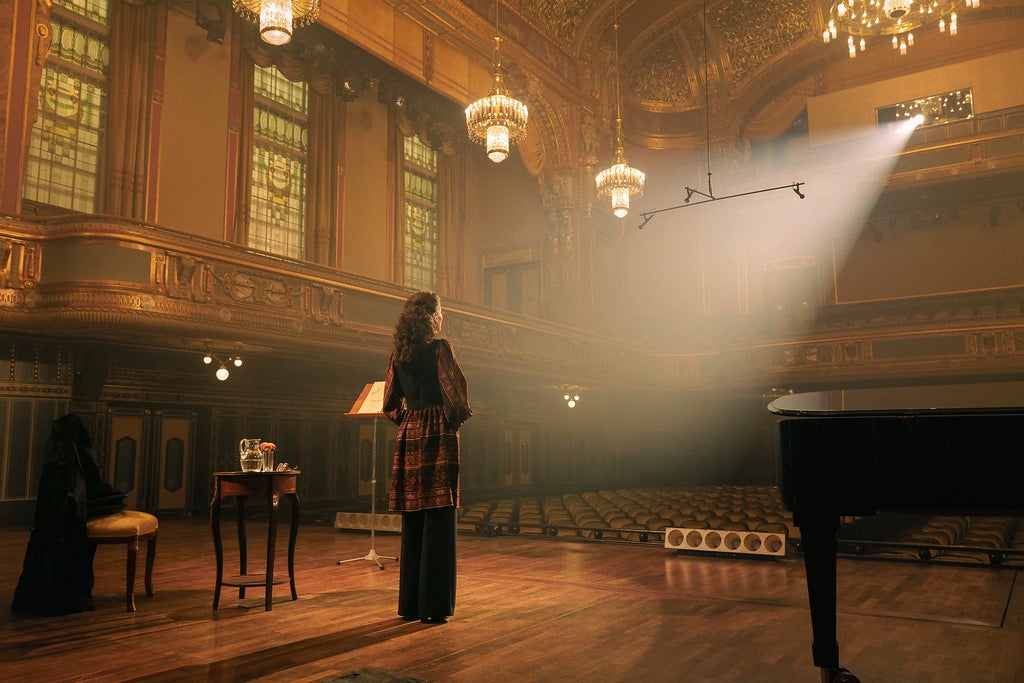
“Maria Callas wore [YSL] a lot in the ‘70s, especially with those trousers, because that was the fashion statement of the time,” he says. The print takes inspiration from the dynamic costumes of the Ballets Russes and the color of Cantini Parrini’s grandmother’s Hermès scarf.
The Transcendent Robe And Nightgown
Maria spends most of the time before her death from a heart attack at age 53 in her grand apartment at 36 Avenue Georges Mandel in Paris’ 16th arrondissement, where she ruminates on her celebrated past and torments herself by listening to recordings of her acclaimed performances, all while swathed in a tactile, floor-length robe. In the production notes, Cantini Parrini described it as “like her second skin, the thing that protects her and envelops her in the domestic sphere.”
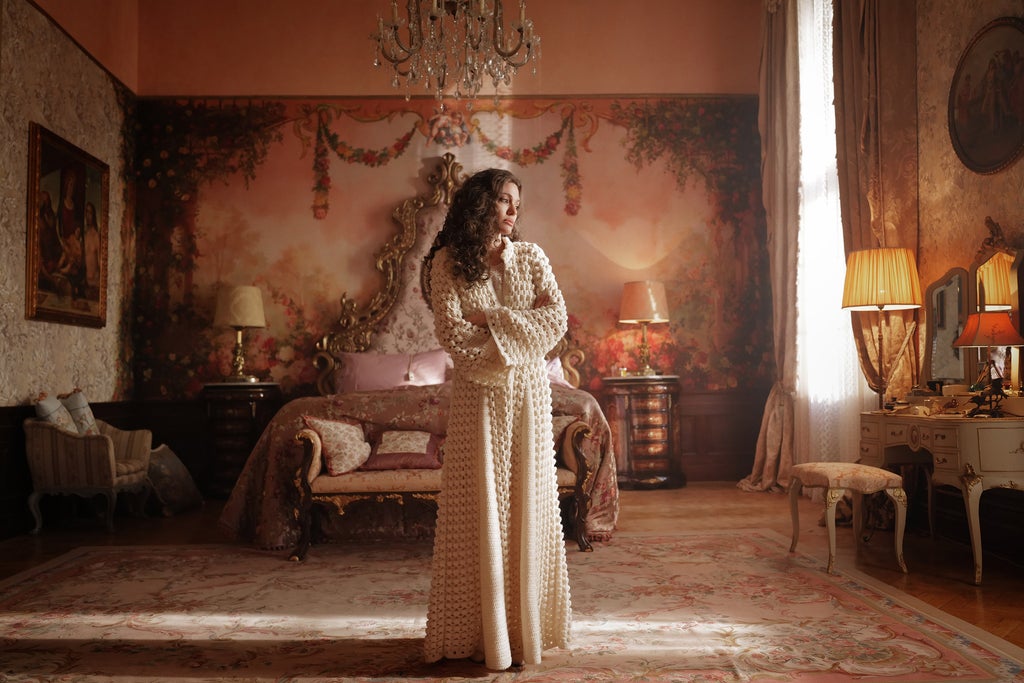
The sweeping robe nearly comes to life with Jolie’s dramatic movements, as well as through the “very complicated” 3D manufacturing process involving wool and cashmere specialty yarns. “It was made in Rome with a specific type of knit that was done in the ‘70s,” says Cantini Parrini. “Angelina fell in love with it when she saw it, and she actually wore it during the first dress rehearsal.”
The alabaster white color of the robe nods toward ancient Greece, in honor of the American opera singer’s heritage, while the flowing silhouette evokes a high priestess. Underneath, Maria exudes fragility in an ethereal nightgown made of sheer silk layers, with a dainty bow and intricate lace embroidery at the neckline.
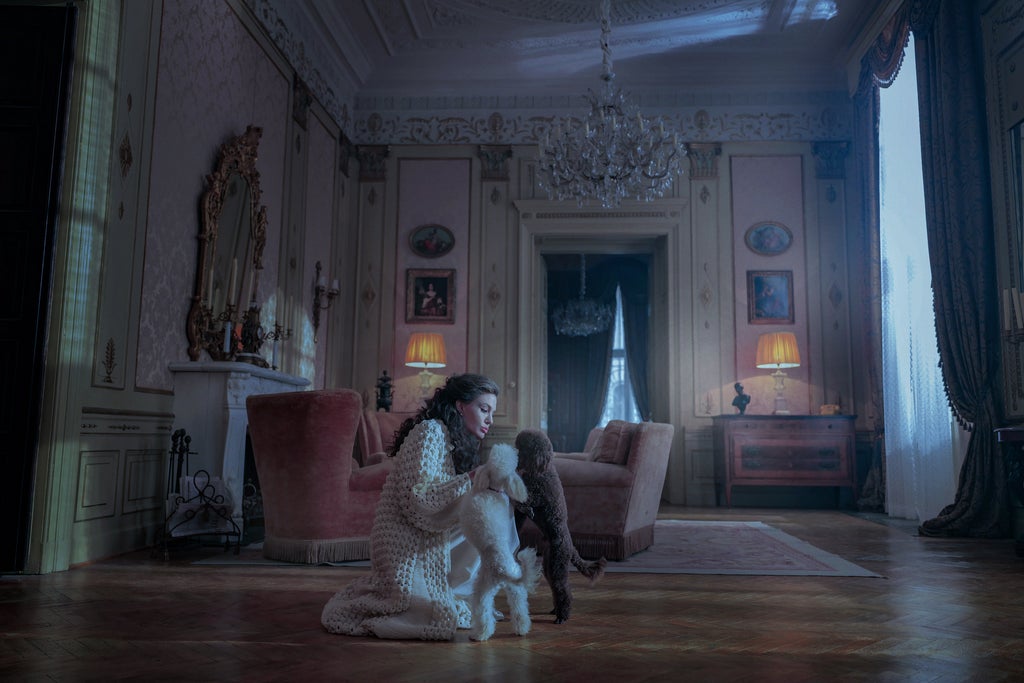
“I brought many [nightgowns] for Angelina to see, and this one was particularly beautiful,” says Cantini Parrini, who found the vintage piece at the Tirelli costume house in Rome.
Maria Callas’ Spectacular Opera Coat
With her final moments imminent, Maria directs her trusted butler Ferruccio (Pierfrancesco Favino) and housekeeper Bruna (Alba Rohrwacher), her only friends, to “put on nicer clothes — we’re going out to celebrate my life.” She throws a resplendent, red and gold brocade evening coat with plush, fur-trimmed cuffs and lapels over her ghostly nightgown.
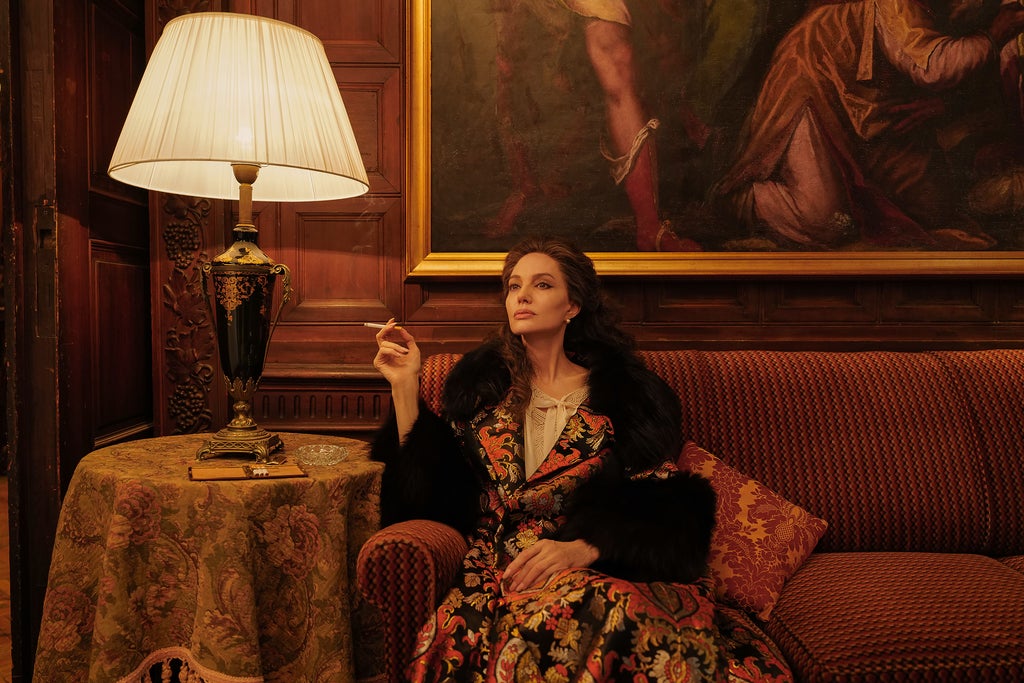
“[In the film,] she’s in a state of mental confusion, so she decides that she’s going to wear the most beautiful piece of clothing that she owns,” says Cantini Parrini, explaining the combination. “I consulted with Pablo about this, and we came to the conclusion that, yes, this was the coat that she should be wearing that evening.”
It’s an especially important piece: The coat belonged to the real Maria Callas. (Cantini Parrini calls it a “secret” gift.) It isn’t the only item in the costume department that directly connects the film to the real-life legend — it didn’t make it onscreen, but Cantini Parrini pulled a brown dress from his archives from one of the singer’s favorite designers, Biki, which he had found in a vintage market. “In the hem,” he reveals, “I found this little piece of white fabric with the catalog number saying, ‘Designed for Ms. Maria Callas.’”
Maria will be in select theaters on November 27 and stream on Netflix on December 11.
Like what you see? How about some more R29 goodness, right here?
Wicked's Costumes Were "Sprinkled With Magic"

No comments:
Post a Comment